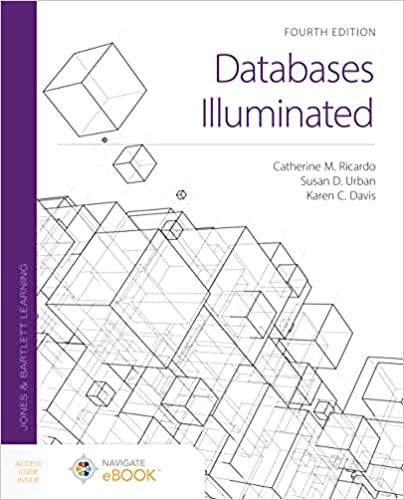i need answer for this lab work
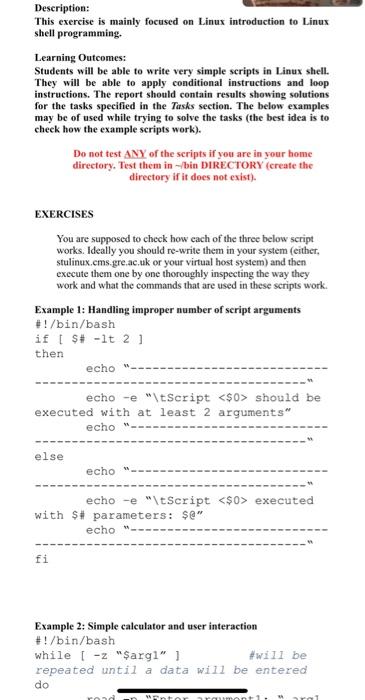
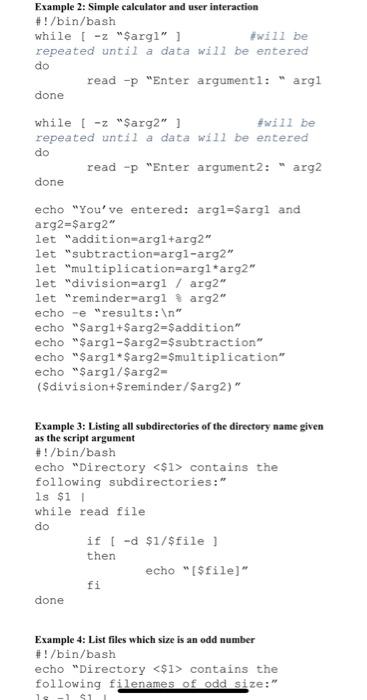
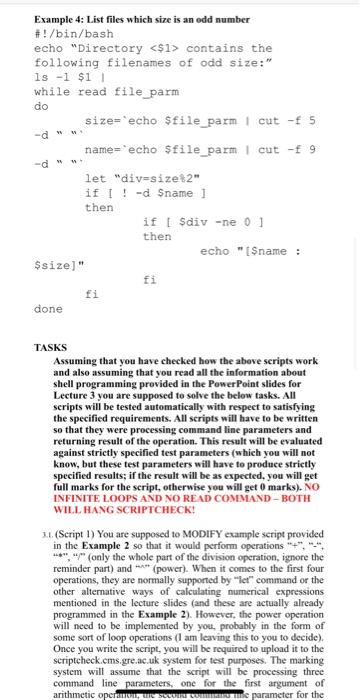
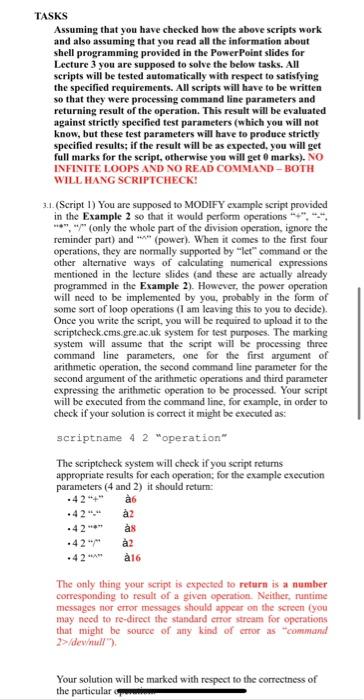
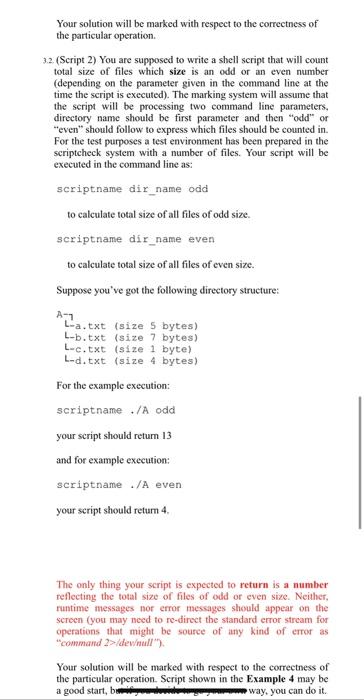
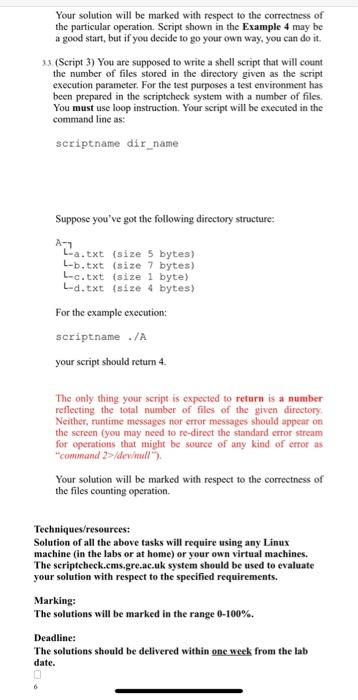
Description: This exercise is mainly focused on Linux introduction to Linux shell programming. Learning Outcomes: Students will be able to write very simple scripts in Linux shell. They will be able to apply conditional instructions and loop instructions. The report should contain results showing solutions for the tasks specified in the Tasks section. The below examples may be of used while trying to solve the tasks (the best idea is to check how the example scripts work). Do not test ANY of the scripts if you are in your home directory. Test them in bin DIRECTORY (create the directory if it dees not exist). EXERCISES You are supposed to check how each of the three below script works. Ideally you should re-write them in your system (either, stulinux.ems.gre.ac,uk or your virtual host system) and then execute them one by one thoroughly inspecting the way they work and what the commands that are used in these scripts work. Example 1: Handling improper number of script arguments \#!/bin/bash if [$#1t2] ther. echo "- echo -e "ItScript $0 should be executed with at least 2 arguments" echo " else echo e "\tScript $0 executed with \$\# parameters: $en echo "= fi Example 2: Simple calculator and user interaction \#!/bin/bash while [ -z "\$argl" ] \#will be repeated until a data will be entered do Example 2: Simple calculater and user interaction \#!/bin/bash while [ -z " sarg1] fwill be repeated until a data will be entered do done while [ -z "\$arg2" ] \#will be repeated until a data will be entered do done echo "You've entered: argl=\$arg1 and arg 2=$arg2 let "addition=argl+arg2" let "subtraction=argl-arg2" let "multiplication=arg1*arg2" let "division=arg1/ arg2" let "reminder=argl fir arg2" echo -e "results: ln " echo "\$arg 1+$arg2= \$addition" echo "\$arg1-\$arg2=\$subtraction" echo "Sargl* \$arg2 =\$multiplication" echo "\$arg1/\$arg2= (\$division+\$reminder/\$arg2) " Example 3: Listing all subdirectories of the directory name given as the script argument \# !/bin/bash echo "Directory $1 contains the following subdirectories:" 18$11 while read file do if [-d $1/$file] then EI done Example 4: List files which size is an odd number \#!/bin/bash echo "Directory $1 contains the following filenames of odd size:" Example 4: List files which size is an odd number \#!/bin/bash echo "Directory $1 contains the following filenames of odid size:" 1s1 s1 while read file parm do size= "echo \$file parm I cut f5 fame = echo $file parm I cut f 9 d w let "div=size:2" if I ! -d Sname I then if [ Sdiv =ne0. then echo "[Sname : \$size." EI. E1 done TASKS Assuming that you have checked hew the abeve scripts work and also assuming that you read all the information about shell programming provided in the PewerPoint slides for Lecture 3 you are supposed to solve the below tasks. AII scripts will be tested automatically with respect to satisfying the specified requirements. All scripts will have to be written so that they were processing command line parameters and returning result of the operation. This result will be evaluated against strictly specified test parameters (which you will not know, but these test parameters will have to produce strictly specified results; if the result will be as expected, you will get full marks for the script, otherwise you will get 0 marks). NO INFINITE LOOPS AND NO READ COMIMLND - BOTH WII.L. HANG SCRIPTCHECK! 3.1. (Seript 1) You are supposed to MODIFY example seript provided in the Example 2 so that it would perform operations ++,"+, "**, "F (only the whole part of the division operation, ignore the reminder part) and "N (power). When it comes to the first four operations, they are normally supported by "let" command or the other alternative ways of calculating numerical expressions mentioned in the lecture slides (and these are actually already programmed in the Example 2). However, the power operation will need to be implemented by you, probably in the form of some sort of loop operations ( I am leaving this to you to decide). Once you write the seript, you will be required to upload it to the scriptcheck.ems.greac.uk system for test purposes. The marking system will assume that the script will be processing three command line parameters, one for the first argument of arithmetic operamony, arescoonar countanome parameter for the TASKS Assuming that you have checked how the above seripts work and also assuming that you read all the information about shell programming provided in the PowerPoint slides for Lecture 3 you are supposed to solve the below tasks. AII scripts will be tested autematically with respect to satisfying the specified requirements. All scripts will have to be written so that they were processing command line parameters and returning result of the operation. This result will be evaluated against strictly specified test parameters (which you will not know, but these test parameters will have to produce strictly specified results; if the result will be as expected, you will get full marks for the script, otherwise you will get 6 marks). NO INFINITE LOOPS AND NO READ COMVAND - BOTH WILL HANG SCRIPTCHECK! 3.1. (Script 1) You are supposed to MODIFY example script provided in the Example 2 so that it would perform operations 4, . H. 4, "*"", ")" (only the whole part of the division operation, ignore the reminder part) and 4n (power). When it comes to the first four operations, they are normally supported by "let" command or the other alternative ways of calculating numerical expressions mentioned in the lecture slides (and these are actually already programmed in the Example 2). However, the power operation will need to be implemented by you, probably in the form of some sort of loop operations (I am leaving this to you to decide). Once you write the script, you will be required to upload it to the scriptcheck.cms.gre.ac.uk system for test purposes. The marking system will assume that the script will be processing three command line parameters, one for the first argument of arithmetic operation, the second command line parameter for the second argument of the arithmetic operations and third parameter expressing the arithmetic operation to be processed. Your script will be executed from the command line, for example, in order to check if your solution is correct it might be executed as: scriptname 42 "operation" The scriptcheck system will check if you script retums appropriate results for each operation; for the example execution parameters ( 4 and 2) it should return: .42+.422.42.42.42na6a2asa2a16 The only thing your seript is expected to return is a number corresponding to result of a given eperation. Neither, runtime messages nor error messiges should appear on the sereen (you may need to re-direct the standard error stream for operations that might be source of any kind of ertor as command 2>/ devinall " ). Your solution will be marked with respect to the correctness of Your solution will be marked with respect to the correctness of the particular operation. 3.2. (Script 2) You are supposed to write a shell script that will count total size of files which size is an odd or an even number (depending on the parameter given in the command line at the time the script is executed). The marking system will assume that the script will be processing two command line parameters, directory name should be first parameter and then "odd" or "even" should follow to express which files should be counted in. For the test purposes a test environment has been prepared in the scriptcheck system with a number of files. Your script will be executed in the command line as: scriptname dir_name odd to calculate total size of all files of odd size. scriptname dir_name even to calculate total size of all files of even size. Suppose you've got the following directory structure: A-7 L-a.txt (size 5 bytes) L-b.txt (size 7 bytes) L-c.txt (size 1 byte) L-d.txt (size 4 bytes) For the example execution: scriptname ./A odd your script should retum 13 and for example execution: scriptname. /A even your script should retum 4. The only thing your script is expected to return is a number reflecting the total size of files of odd or even size. Neither, runtime messages nor error messages should appear on the screen (you may need to re-direct the standard error stream for operations that might be source of any kind of errot as "command 2> /dewnull"). Your solution will be marked with respect to the correctness of the particular operation. Script shown in the Example 4 may be Your solution will be marked with respect to the correctness of the particular operation. Script shown in the Example 4 may be a good start, but if you decide to go your own way, you can do it. 33. (Script 3) You are supposed to write a shell script that will count the number of files stored in the directory given as the script execution parameter. For the test purposes a test environment has been prepared in the scriptcheck system with a number of files. You must use loop instruction. Your script will be executed in the command line as: seriptname dir name Suppose you've got the following directory structure: A-7L-a.txt(size5bytes)L-b.txtL-c.txtL-d.txt(size7bytes)size1byte)(size4bytes) For the example execution: scriptname . /A your script should return 4. The only thing your script is expected to return is a number reflecting the total number of files of the given directory. Neither, runtime messages nor error messages should appear on the sereen (you may need to re-direct the standard error stream for operations that might be source of any kind of error as "command 2>/dewnull"). Your solution will be marked with respect to the correctness of the files counting operation. Techniques/resources: Solution of all the above tasks will require using any Linux machine (in the labs or at home) or your own virtual machines. The scriptcheck.cms.gre.ac-uk system should be used to evaluate your solution with respect to the specified requirements. Marking: The solutions will be marked in the range 0100%. Deadline: The solutions should be delivered within one week from the lab date












